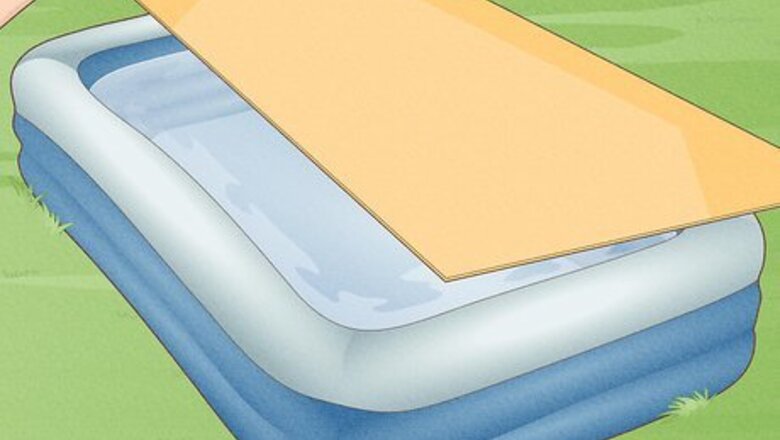
views
X
Trustworthy Source
Centers for Disease Control and Prevention
Main public health institute for the US, run by the Dept. of Health and Human Services
Go to source
That said, if you're looking for other options, you've come to the right place! In this article, we’ll cover everything you need to know about keeping the water clean in an inflatable pool so you don't have to refill it as often.
Cover the pool when it’s not in use.
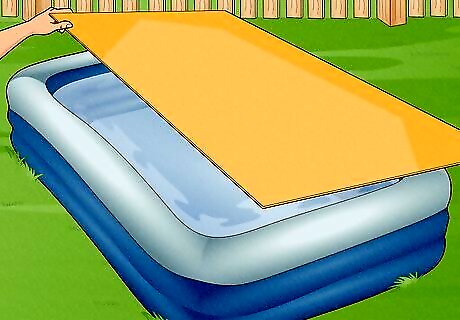
Even if it’s just sitting out a few hours, a pool cover will protect the water. Not only will this keep stray dirt, leaves, and bugs from building up in the water, but it will minimize evaporation from the sun, which should preserve some water. Grab a plastic tarp, lay it out over the water, and weigh the edges down with bricks or heavy items to keep your blow-up pool clean. A sheet of corrugated plastic makes a simple pool cover for really small inflatable pools.
Skim debris and leaves off the surface.
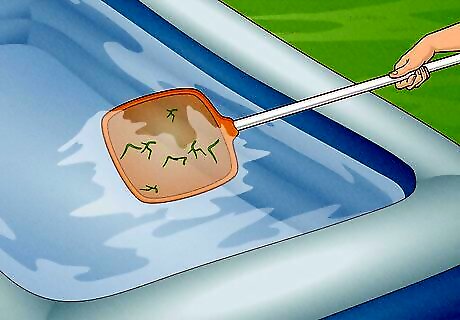
Use a pool skimmer net to remove any grass, dirt, or debris from the water. The longer you let items soak in the pool water, the dirtier the water will become. Use a handheld net to scoop out any debris that ends up in the pool and discard it in the trash. Organic matter breaks down super quickly in standing water, which leads to bacteria, so removing any of this stuff is key to keeping the water swimmable.
Vacuum the bottom of the pool.
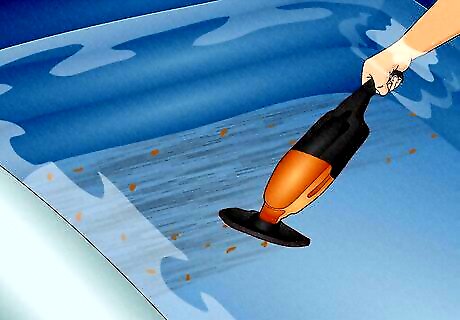
A handheld/portable pool vacuum will keep the bottom clean. Your children bring all kinds of dirt, oil, and grime to the bottom of the inflatable pool with their feet. Keep the bottom of that pool pristine using a small vacuum. Simply turn the vacuum on and run it along the floor of the inflatable pool to suck up any sediment that’s clinging to the plastic. A pool vacuum will also keep the water clear so that it still looks blue. You probably don’t need to invest in an automated robot vacuum if you’re only using it for an inflatable pool, but you can buy one if you’d like!
Leave an oil-absorbing sponge in the water.
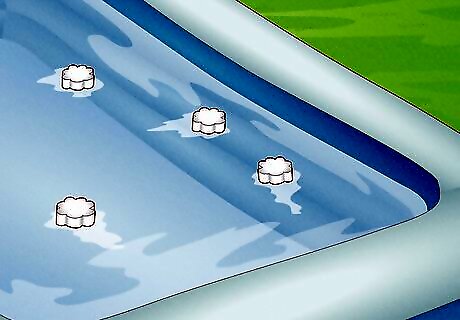
Let an oil-attracting sponge soak up your kid’s sunscreen and skin oils. As children play in an inflatable pool, all kinds of microscopic junk ends up in the water. Purchase an oil-absorbing sponge designed for pools and toss it in the water. If it gets too grimy, squeeze the water out over the ground and then flip the sponge over. A single sponge can potentially last an entire season so long as you squeeze it out and flip it over regularly. These sponges are hydrophobic, which means they don’t absorb water. This makes them pretty resilient over time. You can potentially copy this effect by tossing a clean tennis ball in the water and replacing it periodically as it gets dirty.
Use chlorine tabs and a dispenser in bigger pools.
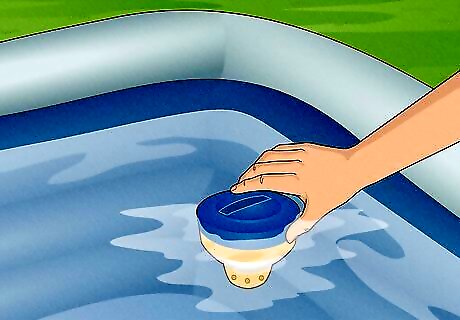
You can try to prolong the life of the water with chlorine pool discs. Chlorine will kill bacteria and make water safe to swim in. Purchase chlorine discs and set one inside of a dispenser. Place the dispenser in the water and let it break down slowly. So long as the chlorine levels are safe, feel free to swim in the water while the chlorine disc is breaking down. Test the water periodically with a chlorine testing kit. Water needs to be 1-3 ppm (parts per million) chlorine for it to be safe. You must test the water before swimming in it. Too much chlorine can make water dangerous for your child’s skin.
Set up a foot-washing station near the pool.
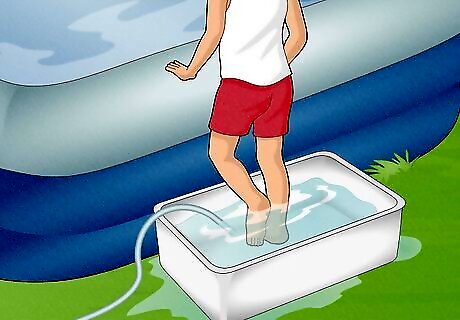
Rinsing your feet off before getting in the pool can keep the water clean. It’s fun to watch kids jump in and out of the water but unfortunately, that process tracks all kinds of dirt, grass, and dust into the water from their feet. Set up a large container of fresh water and a hose next to the pool and ask everyone to wash their feet off before getting back in the water. This will keep the water clean for much longer.
Place a fan near the pool.
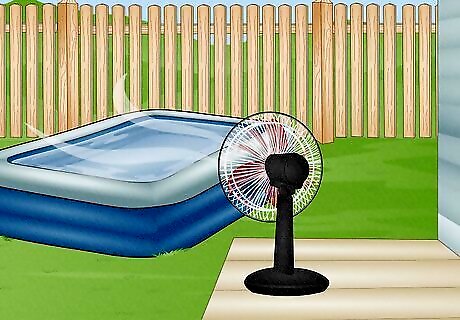
An oscillating fan should keep bugs and dust away from the water. Standing water attracts all kinds of particles from the air, and mosquitoes and flies will flock to the water in no time. Set up a large fan near the pool and set it to oscillate so that it blows air over the top of the pool water. This should keep the water clean and clear of any dust or pesky bugs.
Apply pool flocculant for algae.
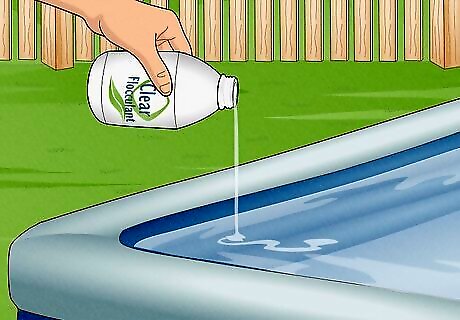
Flocculant is a quick fix if you’ve got cloudy or green water. Flocculant is sort of like a magnet for contaminants—it will make microscopic contaminants coagulate and bundle up together to make cleanup a sinch. If you’re taking a break from the pool for a few hours, read the instructions on the flocculant product, pour it into the water, and then vacuum any “cobwebs” that appear. Flocculant is perfectly safe for swimming pools so long as you follow the instructions on the label. Floccculant is also known as pool clarifier. While these products are technically different, companies use the terms interchangeably.
Change the water out every week or so.
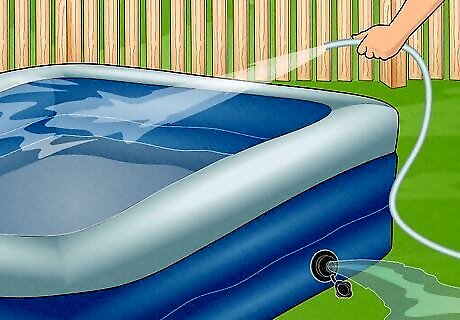
If you aren’t treating the water with chlorine, change the water more often. How often you need to change the water depends on whether you’re treating it with chlorine or not. For a totally untreated pool, you’re best off changing the water every 2-7 days depending on how grimy it gets. If you treat the water with chlorine, you might not need to change the water for weeks at a time. Remember, you can still get sick by swimming in day-old water, even if it’s chlorinated, when there’s no pump or filter.
Clean the pool with soapy water after emptying it.
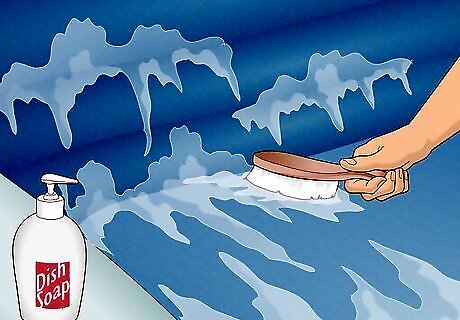
To keep the water clean in the future, scrub your pool before refilling it. Once you empty the water out, you must clean the pool before storing it. If you don’t, the water you fill it with in the future will be downright filthy! Use dish soap and water to scrub down the plastic or vinyl pool. Rinse any soapy water off with the hose and then let it air dry before putting it away. Can use water and borax or another natural disinfectant if you prefer. Maintenance cleanings are a key part of maintaining an inflatable pool.
Disinfect dry surfaces with bleach.
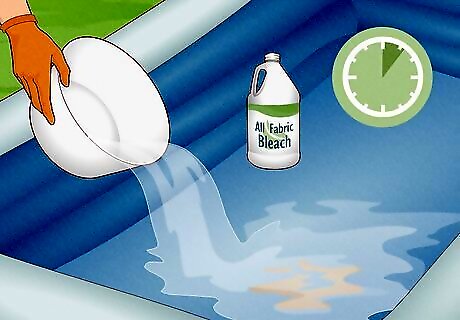
If someone vomits or has an accident, disinfect the pool before reusing it. Get everyone out, pour the water out, and throw on some disposable gloves. Dilute ½ cup (120 mL) of bleach in 1 gallon of room-temperature water. Pour the bleach over the plastic material and wait 6 minutes to let the bleach kill off any harmful bacteria or viruses. Then, rinse the bleach off with water. Let the pool air dry in the sun. While adding bleach to pool water can disinfect it, this isn’t a safe way to keep inflatable pool water clean while the pool is in use. If you accidentally use too much bleach, you might burn or blind your swimmers.










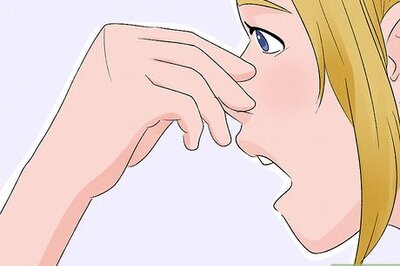


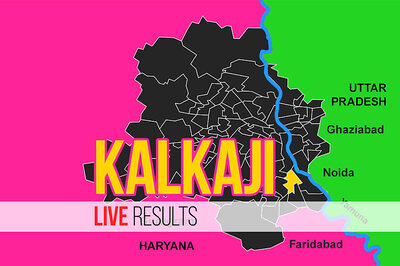


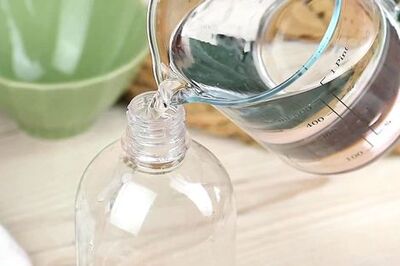


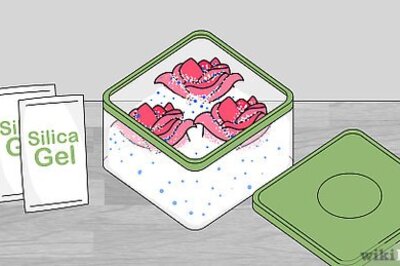
Comments
0 comment